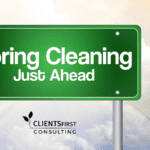Basics of CRM Success

What to Focus On
In working together with firms of all sizes on CRM projects, I have come to appreciate that there is no “one size fits all” for CRM success – either in terms of systems or functions. What is more important is to understand what you are trying to accomplish –the firm’s unique needs and goals – and then to fully evaluate all of the solutions that are available to see which can best meet those needs and goals. Ultimately, a CRM system should help your firm solve problems and automate processes.
It’s important to remember that CRM is about people, process and technology. When CRM systems failed to meet expectations in the past – and a significant number of them did – it was often due to the people and process issues rather than the technology. So, to succeed with CRM, focus on people, processes and problems first, products second.
Which System Should We Choose?
The first step toward CRM success starts way before system selection. Begin the process by first assessing your firm’s unique needs and requirements. The information from this CRM Assessment should flow into a requirements document and a RFP or ‘roadmap’ for the vendors to follow during demonstrations. It’s also helpful to provide score sheets to participants so they can rate key features during the demonstrations, as many systems have similar features that can be easily confused.
When it comes to system selection, there are some important considerations. While there are a lot of CRM systems on the market, for law firms it’s particularly important to select a provider with industry expertise. This is because implementing a CRM in a professional services firm is different than in a corporate entity. The software needs to be optimized to work in an environment that relies significantly on Outlook. Additionally, attorneys have a little tolerance for bad data, so data quality tools and services will be essential to encourage attorney adoption. Plus there must be minimal training requirements and little modification to the business processes of busy attorneys.
What Will It Cost?
Despite some perceptions to the contrary, the pricing of professional service CRM providers is almost always lower the CRM prices outside the industry – often significantly lower. Additionally, the ongoing charges can also be significantly lower. Most CRM systems currently use a subscriptions model but some still offer a one-time fee for software with annual maintenance charges at a percentage of the initial amount.
There can also be additional charges for hardware associated with installed CRM systems and for the professional services required for setup, installation, integration and training, but these are typically one-time charges that are an investment to ensure that the CRM is optimally configured to meet the firm’s specific needs. In contrast, to meet the unique needs of a law firm, it will be much more expensive to reconfigure a basic out of the box CRM system designed for corporations or sales teams.
Where Will It ‘Live’?
Hosting is also a crucial element to consider in CRM selection. Outside of law firms, most organizations prefer hosting their CRM system and data ‘in the cloud’, which is a ‘fluffy’ euphemism for on ‘a server someplace outside the firm.’ While this has been standard practice for other industries for over a decade, and while it may even be more secure than hosting within the firm, in the past, many firms had taken a pass when it came to allowing their sensitive contact data to reside outside the firm firewall. Recently, however, firms are finally feeling more open to cloud-based options which have fewer hardware requirements, require less maintenance and can promote efficiency and provide flexibility.
What Should It Do?
Successfully selecting – and deploying – a CRM system requires separating the ‘must have’ functionality from the ‘bells and whistles’. When evaluating systems and providers, it can be helpful to keep in mind that bells and whistles can be essential… but usually only on a bike or a train. For selecting a CRM system, focus instead on your firm’s need and goals.
One primary need that is almost always articulated by firms of all sizes is enhancing communication and coordination of mailings and events. I’ve often heard it said, “Our firm spent all of this money on a CRM system and all we got was a really expensive mailing list.” However, usually the person making this comment has never had to personally manage a law firm mailing list. Many firms do hundreds, or even thousands, of mailings each year. They are sent to thousands of contacts whose information changes frequently. In some firms this is compounded by the multiple attorneys who have relationships with these contacts and, in some cases, may even feel that they ‘own’ them. This is not a job that most people would volunteer for.
Fortunately, mailing list and event management is a core component of almost every CRM system. All of the systems have out-of-the-box functionality that allows attorneys or assistants to add contacts to mailing or event lists. The lists can then be incorporated into e-mails, invitations or other communications and then distributed.
The systems also allow firms to categorize and enhance information about contacts and to better segment them. For instance, a firm might want to define who their Clients or top Clients are. They may want to identify a primary, or multiple, industries for key companies. They may want to enhance contact information with news, business or financial intelligence. Ultimately these fields or categories can also be searched to create lists and enhance targeted communication.
Additionally, there are external providers who offer enhanced e-mail communication and reporting functionality, as well as the ability to have emails delivered from an alternate domain in order to avoid issues with SPAM. These products should be evaluated by firms who do a significant number of mailings and events. The ideal scenario is to have these tools integrated to minimize duplicative entry and maximize efficiency.
Who and What Do We Know?
As firms grow, both in numbers of attorneys and dispersed offices, the ability to identify and leverage connections becomes increasingly important – and more difficult. In addition, now more than ever, firms are being compelled to respond to a deluge of RFPs and are more frequently proactively pitching for new business. Because finding these core relationships can enhance the success of these business development efforts, the relationship intelligence or ‘who knows who’ functionality of CRM is often considered essential.
Additionally, as the complexity of the RFPs has intensified, they often require firms to tap into the depth of and breadth of their cumulative experience and expertise. Some of the newer CRM systems can provide a repository and access point for this type of information as well.
What Else?
As firms have grown, the level of sophistication of their approaches to business development has been growing as well. More than ever, firms of all sizes are experimenting with things like business development coaching or training, Client teams, alumni programs, Client interviews or Client service initiatives. What is common – and essential – to all of these initiatives is the need for communication and collaboration. CRM was designed to enable this, and it can be an excellent – even essential – tool for succeeding with these types of business development initiatives.
CRM systems allow users to share information and notes about Clients and prospects, add marketing and business development activities to records, enhance contacts with business or competitive intelligence, monitor or watch changes to selected contacts, attach relevant documents and even track business development opportunities. As firms grow more sophisticated in their approaches to business development – and CRM strategy – these are now moving from ‘nice to have’ features to ‘must haves.’
What Now?
Because trying to process this information about CRM can seem overwhelming, it can be helpful to keep a few things in mind:
- Don’t try to do everything. CRM can do a thousand things… that doesn’t mean that it should. Focus on your firm’s core needs and goals – initially the two or three that are most pressing and essential.
- Do something. Start by developing a CRM success plan strategy and plan. Assess your firm’s goals and needs. Get agreement, input and buy-in from key stakeholders. Then, as you execute your plan and achieve your goals, communicate successes and set new goals. Repeat.
Don’t do it alone. Not everyone has managed a CRM project in the past. These types of projects have high failure rates – and you don’t often get a second chance at CRM success. At CLIENTSFirst we have more than a decade of experience and have helped hundreds of firms successfully select and implement CRM and related and integrated to technology. Contact us if you need assistance. We are always happy to share information, ideas and best practices for success.






